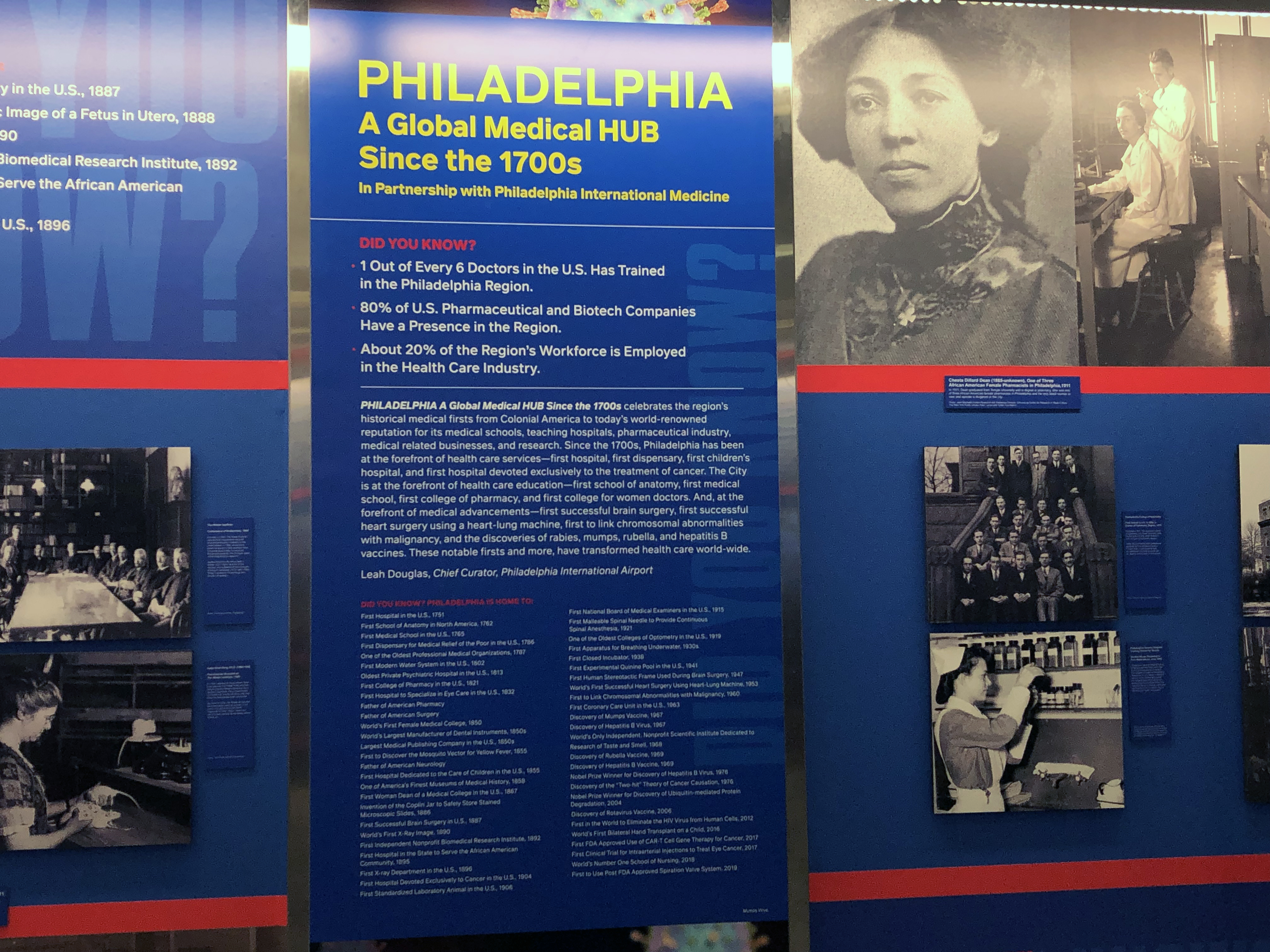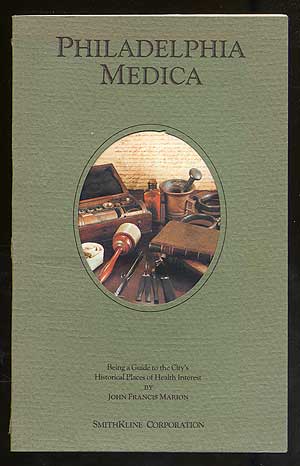
One of the most prominent areas in Philadelphia has been medicine – in fact, the city has been at the forefront of medical innovation since colonial times. Just this week, the Pennsylvania College of Optometry (PCO) and Salus University were included in a new art exhibit housed between Terminals A and B at the Philadelphia International Airport entitled Philadelphia: A Global Medical HUB Since the 1700s. A collaborative effort between the airport, Philadelphia International Medicine, and Welcome America, the unveiling of this year-long exhibit – to be served as the kickoff for the city’s Independence Day celebrations.
 Splashed on two walls emblazoned in patriotic colors of red, white and blue with a smattering of medical images highlighted significant firsts which have happened here in our hometown. Some of these included: the First Hospital in the U.S. in 1751, the First Medical School in the U.S. in 1765, along with PCO’s legacy of being One of the Oldest Colleges of Optometry in the U.S. dating back to 1919, and the First School in the U.S. to Offer a Doctor of Optometry Degree in the early 1900s.
Splashed on two walls emblazoned in patriotic colors of red, white and blue with a smattering of medical images highlighted significant firsts which have happened here in our hometown. Some of these included: the First Hospital in the U.S. in 1751, the First Medical School in the U.S. in 1765, along with PCO’s legacy of being One of the Oldest Colleges of Optometry in the U.S. dating back to 1919, and the First School in the U.S. to Offer a Doctor of Optometry Degree in the early 1900s.
This, however, wasn’t the College or University’s first foray into being involved in a healthcare guide. Back in January 1976, to celebrate the United States Bicentennial and the 200th anniversary of the adoption of the Declaration of Independence, the focus then was “Bicentennial Health Guidebook – A Winner” as featured in the PCO Record – published semi-monthly.
At that time, PCO – with other health institutions – was featured in a unique publication, Philadelphia Medica, “Being a Guide to the City’s Historical Places of Health Interest.”
The book was created by SmithKline Corporation as an excellent way of commemorating this nation’s Bicentennial. It was “the first guidebook ever prepared to combine the rich and colorful history of the health sciences in Philadelphia with intimate personal glimpses of the many Philadelphians who helped establish the city’s reputation for leadership in the health disciplines,” SmithKline said.
Similar to the current display at the airport, both have highlighted not only the institutions but also individuals who have made a lasting impact on the healthcare of Philadelphia and this region.